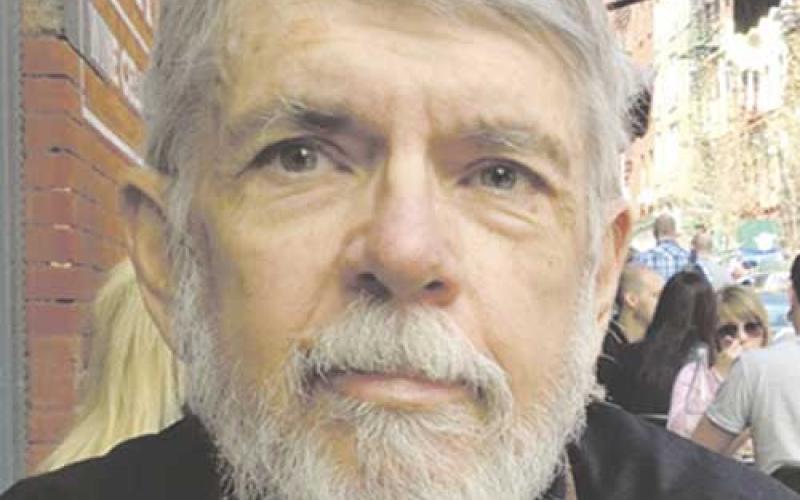True story of Texas vengeance
It reads like fiction, but it’s presented as “a true story of Texas vengeance.”
Real or imagined, the tale’s illustrative of life -- and violent death -- during Reconstruction, a period of continuing incivility following the decidedly uncivil Civil War. The story, according to a 1952 telling by writer Ross Phares, was handed down by old-timers in Bastrop County. It involved two men -- John Long and Gabriel Morrow.
Long, described as “a handsome giant of a man,” stood more than six feet. Like many early Texans, he had come from Tennessee. Settling in the Bastrop area, he cleared brush and felled trees for a farm, built a cabin and began raising a family. Though friendly enough, he nevertheless tended to mind his own business. Up to a point...
Aside from his stature, something else made Long stand out. When he squeezed the trigger of his rifle, the ball always went precisely where he aimed. Everyone in the county admired Long’s shooting skills except Morrow, a man who figured he was the better marksman.
Neighbors organized a shooting match so it could be determined once and for all who deserved recognition as Bastrop County’s best shot. In the contest, Long proved to be the most accurate rifleman by, well, a long shot. However, Morrow did not gracefully accept defeat. In fact, he raged that Long had only won by accident. Confident of his aim, Long averred that he would be happy to give Morrow another chance any time.
What happened next, however, evolved into a much different sort of rematch. While pride and a competitive spirit are strong motivators, a deeper antipathy must have existed between the two men. Likely it had to do with issues stemming from the late war. Maybe Long had opposed slavery and supported the Union.
Whatever the reason, Morrow and a group of his cronies visited Long’s cabin late one night. They claimed to have found in Long’s corral a horse bearing someone else’s brand. For stealing the horse, Morrow explained, he would be given 20 lashes from each of the 15 men present. (That sounds preposterously high, but that’s the story as reported by Phares.) On top of the searing licks laid across his bare back, if Long did not leave Bastrop County within 24 hours, he would be hanged.
However many lashes he endured, he mercifully lost consciousness before the whipping ended. When the gang rode off, Long’s wife untied him from the tree to which he had been bound, managed to get him inside their cabin and dressed his wounds. The following day, she yoked their oxen to their wagon, loaded the family’s possessions and with her badly wounded husband and child, left the county as ordered.
As time passed, folks eventually quit talking about the incident. But Morrow and his followers continued to terrorize the county. Not that they didn’t have a little fun every once in a while.
One of the ways Morrow and other local men amused themselves -- and provided meat for their families -- was to compete in a deer run. Long before wildlife conservation laws, one method of hunting was for a line of men to move through the brush and timber, running the deer toward another line of men. The person who felled the most deer won a purse.
At the end of the hunt, one of the men failed to return. Searching the pines, the hunters found the man dead with a bullet wound to the head. Thinking it a hunting accident, the men resumed their hunt the following day. Again, someone turned up missing only to be discovered with a bullet in the head. According to the tale, that happened yet another time before it finally sank in on Morrow and his followers that the three men, all participants in the lashing of the banished John Long, had not died from stray bullets.
The mob then turned its attention to finding Long, the logical suspect. This time he would get no second chance. But as the men scoured the county, their number continued to decrease, one long-range head shot at a time.
Finally, of the original night riders, only Morrow and his chief lieutenant remained alive. Realizing an out-of-state trip would be good for his health, Morrow dispatched his number two man and a hired hand to town to lay in supplies. On their way back to Morrow’s place, the boozed up chief sycophant was puzzled to see a large log laying across the road.
Getting out of the wagon to move it, the man dropped where he stood. An instant later, the hired hand holding the reins heard the crack of a rifle. Hurrying back to his boss’ place, he reported the death of Morrow’s henchman.
Now the last man of his gang alive, Morrow knew he had to get gone immediately. Soon he saddled up and rode hard to the north, thinking to escape into the virtual no-man’s land of Indian Territory. Less than two weeks later, as he was about to leave Texas, someone called his name. When Morrow turned to see who it was, a bullet slammed into his forehead.
Some said the good folks of Bastrop County had taken it upon themselves to get rid of Morrow and his followers, that Long had nothing to do with it. Whoever did the killing, they sure knew how to shoot. And Long was never heard of again, except in the telling of this story.
- Log in to post comments



